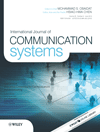
INTERNATIONAL JOURNAL OF COMMUNICATION SYSTEMS
Scope & Guideline
Unveiling Breakthroughs in Signal Processing and Networks
Introduction
Aims and Scopes
- Wireless Communication Technologies:
Research on various wireless communication technologies, including 5G, IoT, and beyond, exploring their architectures, protocols, and performance enhancements. - Network Optimization and Resource Management:
Studies aimed at improving network performance through optimization techniques, resource allocation strategies, and efficient routing protocols. - Signal Processing and Modulation Techniques:
Innovative approaches to signal processing, modulation schemes, and channel estimation methods, particularly in MIMO and OFDM systems. - Machine Learning and AI in Communications:
Application of artificial intelligence and machine learning techniques to enhance communication systems, focusing on predictive modeling, optimization, and anomaly detection. - Security and Privacy in Communication Systems:
Research on security protocols, privacy-preserving techniques, and resilience against cyber threats in communication networks. - Emerging Technologies Integration:
Exploration of the integration of new technologies such as blockchain, fog computing, and edge computing within communication systems.
Trending and Emerging
- Integration of AI and Machine Learning:
There is a growing trend towards utilizing AI and machine learning to enhance various aspects of communication systems, from network optimization to predictive maintenance. - 5G and Beyond Research:
Research focusing on the implementation and optimization of 5G technologies, including non-orthogonal multiple access (NOMA) and massive MIMO systems, is on the rise, emphasizing the need for next-generation communication solutions. - Energy-Efficient Communication Technologies:
Emerging studies are increasingly addressing energy efficiency within communication systems, particularly in IoT and wireless sensor networks, reflecting a broader concern for sustainability. - IoT and Smart City Applications:
Research is heavily focused on the intersection of IoT technologies and smart city initiatives, exploring solutions that enhance urban living through efficient communication networks. - Advanced Antenna Systems:
Innovations in antenna design, particularly those incorporating metamaterials and reconfigurable elements, are trending, supporting the demand for enhanced performance in wireless communications. - Blockchain for Secure Communications:
The application of blockchain technology for enhancing security and privacy in communication systems is gaining significant attention, indicating a shift towards decentralized and secure communication frameworks.
Declining or Waning
- Traditional Network Protocols:
There is a noticeable decrease in research focused on conventional network protocols, as attention shifts towards more dynamic and adaptive protocols that integrate AI and machine learning. - Basic Antenna Design:
Research centered on basic antenna designs without advanced features has diminished, with more emphasis now on complex designs that incorporate metamaterials and reconfigurability. - Static Resource Allocation Strategies:
Static approaches to resource allocation are being overshadowed by adaptive and dynamic strategies that respond to real-time network conditions. - Single-Technology Focus:
Research that addresses only one technology (e.g., solely 5G or solely IoT) is declining, as interdisciplinary approaches that combine multiple technologies are gaining traction. - Conventional Signal Processing Techniques:
Classic signal processing methods are being replaced by more sophisticated techniques that leverage machine learning and deep learning methodologies.
Similar Journals
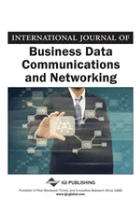
International Journal of Business Data Communications and Networking
Fostering Excellence in Business and Data Communications.The International Journal of Business Data Communications and Networking, published by IGI Global, stands as a pivotal resource in the fields of business and technology, particularly focusing on the interplay between data communications and network systems. With an established presence since 2005, this journal has been instrumental in disseminating research that bridges the gaps between computer networks, management information systems, and business practices. It holds a commendable position in the academic community, reflected in its Q3 rankings in both Computer Networks and Communications and Management Information Systems categories for 2023, alongside respectable Scopus rankings that underline its relevance and contribution to the field. While it operates on a subscription basis, the journal's commitment to quality research makes it an essential read for researchers, practitioners, and students eager to stay abreast of the latest developments and innovations. The journal aims to foster a deeper understanding of the complexities surrounding business communications and data networking, encouraging the advancement of knowledge and practical application in these ever-evolving domains.

Telecom
Fostering Global Knowledge Exchange in TelecommunicationsTelecom is an esteemed peer-reviewed journal published by MDPI, specializing in the fields of computer networks and communications as well as electrical and electronic engineering. Since its inception in 2020, this Open Access journal has provided a platform for innovative research and advancements in telecommunication technologies, making significant contributions to both academia and industry. With an impressive impact factor and a category rank of Q2 in the 2023 Scopus rankings, Telecom continues to be a valuable resource for researchers, professionals, and students seeking to engage with cutting-edge developments in telecommunication. The journal invites high-quality manuscripts that explore emerging trends, challenges, and solutions in the ever-evolving telecom landscape. Situated in Basel, Switzerland, Telecom is committed to fostering a global exchange of knowledge and serves as an essential conduit for advancing the discourse in telecommunications.
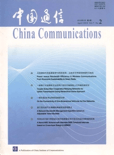
China Communications
Elevating Knowledge in Telecommunications and EngineeringChina Communications is a prestigious peer-reviewed journal published by the China Institute of Communications, dedicated to advancing the field of telecommunications and information technology. With an impressive Q1 ranking in both Computer Networks and Communications and Electrical and Electronic Engineering, this journal stands out as a leading source of cutting-edge research and innovative solutions in the engineering domain. The journal aims to provide a platform for scholars and practitioners to share their findings on the latest trends, technologies, and methodologies impacting the communications landscape in China and beyond. It is particularly noted for its high visibility in the academic community, as demonstrated by its Scopus rankings, which place it in the top percentiles for both fields. Through its commitment to quality content, China Communications contributes significantly to the advancement of knowledge, making it an invaluable resource for researchers, professionals, and students alike.
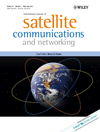
INTERNATIONAL JOURNAL OF SATELLITE COMMUNICATIONS AND NETWORKING
Advancing the Frontier of Satellite ConnectivityInternational Journal of Satellite Communications and Networking is a premier academic journal published by Wiley, dedicated to advancing knowledge in the fields of satellite communications and networking. With an ISSN of 1542-0973 and E-ISSN 1542-0981, this journal has been a significant contributor to the discourse surrounding electronic and media technologies since its inception in 2003. Recognized for its rigorous peer-review process, it has achieved notable rankings, placing in the Q2 and Q3 quartiles across various categories, highlighting its impact and relevance in the competitive domains of Engineering and Media Technology. Researchers, professionals, and students can benefit from access to cutting-edge research and innovations in satellite communications, as it ranks #18/63 in Engineering Media Technology and #323/797 in Electrical and Electronic Engineering. The journal's commitment to fostering a deeper understanding of networking technology makes it an essential resource for anyone looking to stay at the forefront of this rapidly evolving industry.
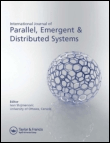
International Journal of Parallel Emergent and Distributed Systems
Empowering Research in the Evolving World of Distributed SystemsInternational Journal of Parallel Emergent and Distributed Systems, published by Taylor & Francis Ltd, is a prestigious academic journal aimed at advancing the fields of parallel computing, distributed systems, and emergent technologies. With an ISSN of 1744-5760 and E-ISSN 1744-5779, this journal has been a vital resource for researchers and professionals since its inception in 2005. As a part of the Q3 category in Computer Networks and Communications and Q4 in Software, it reflects a growing interest and engagement in these critical areas of study, with Scopus rankings highlighting its significance in computer science. Although currently not an open-access journal, its comprehensive exploration of innovative methodologies, systems design, and distributed computing paradigms makes it essential reading for anyone involved in cutting-edge research and application development. The journal not only aims to disseminate novel insights but also serves as a platform to foster dialogue among practitioners and scholars alike, making it a cornerstone in the academic landscape of emergent technologies.

Ad Hoc & Sensor Wireless Networks
Driving excellence in the realm of wireless networks.Ad Hoc & Sensor Wireless Networks, an esteemed journal published by OLD CITY PUBLISHING INC, provides a dedicated platform for the dissemination of pioneering research in the realms of computer science, electrical and electronic engineering, and instrumentation. With an ISSN of 1551-9899 and an E-ISSN of 1552-0633, this journal has established itself as a crucial resource for scholars and practitioners alike, actively contributing to the advancements in ad hoc networks and wireless sensor technologies. It holds a commendable position within the third quartile in its respective fields, with Scopus rankings reflecting its relevance in the academic community. As a publicly accessible source of valuable insights, the journal aims to inspire innovation and facilitate progress across various disciplines. Situated in Philadelphia, PA, and converging its efforts from 2005 to 2024, Ad Hoc & Sensor Wireless Networks continues to be a beacon of research excellence, impacting both theoretical and practical domains in technology.
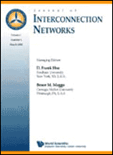
JOURNAL OF INTERCONNECTION NETWORKS
Innovating the Pathways of CommunicationJOURNAL OF INTERCONNECTION NETWORKS, published by World Scientific Publishing Co Pte Ltd, serves as a vital platform for researchers and professionals in the field of computer networks and communications. Established to foster an understanding of interconnection networks, this journal showcases innovative research findings, methodologies, and advancements in the domain. With an ISSN of 0219-2659 and an E-ISSN of 1793-6713, it has navigated through critical periods of publication, capturing the evolution of the field from 2008 to 2013 and from 2015 to 2023, albeit with discontinued coverage in Scopus. Although currently listed in the Q4 category for Computer Networks and Communications, the journal provides unique insights that contribute significantly to the growing body of knowledge in this niche area, appealing to academics, industry practitioners, and students alike. Please note that the journal operates under traditional subscription-based access options. Engaging with the JOURNAL OF INTERCONNECTION NETWORKS will undoubtedly enhance your understanding and stimulate further exploration within the increasingly important landscape of computer networking.

IEEE Open Journal of the Communications Society
Connecting Ideas, Bridging Gaps in Communication ScienceWelcome to the IEEE Open Journal of the Communications Society, a premier open-access publication dedicated to advancing the fields of computer networks and communications. Launched in 2020 by the esteemed IEEE-Institute of Electrical and Electronics Engineers, this journal operates under a commitment to disseminate high-quality, peer-reviewed research that fosters innovation and collaboration within the global communications community. With an impressive impact factor and currently positioned in the Q1 category of Time's rankings for Computer Networks and Communications (2023), the journal ranks 21st out of 395 in its field, placing it within the top 6% globally. It serves as a vital forum for researchers, professionals, and students, providing them with immediate access to pioneering studies and emerging trends. Being fully open access, all published articles are freely available to enhance the reach and impact of your research. Join us in exploring transformative ideas and technologies that shape the future of communications.

WIRELESS NETWORKS
Illuminating the Path of Wireless InnovationWIRELESS NETWORKS is a prestigious journal published by Springer, focusing on cutting-edge research in the domains of wireless communication, computer networks, and information systems. Established in 1995 and set to converge its influential contributions until 2024, this journal has rapidly ascended to a Q2 category ranking in the fields of Computer Networks and Communications, Electrical and Electronic Engineering, and Information Systems, reflecting its significant role in advancing knowledge and innovation—ranked 75th, 151st, and 84th respectively in their fields by Scopus. Researchers and professionals alike value its contribution to the discourse on wireless technologies, making it a vital resource for professionals and students eager to stay abreast of the latest trends and findings. Although it does not offer open access, the insights gleaned from its articles are invaluable for tackling the challenges of modern communications and ensuring the efficient use of wireless networks.

International Journal of Wireless Information Networks
Connecting Ideas, Advancing Wireless InnovationInternational Journal of Wireless Information Networks, published by Springer, is a premier outlet for scholarly research in the fields of wireless information and communication technologies. With an ISSN of 1068-9605 and an E-ISSN of 1572-8129, this journal has established itself as a significant contributor to the literature since its inception in 1994. As evaluated in 2023, it holds a commendable Q2 ranking in several categories, including Computer Networks and Communications, Electrical and Electronic Engineering, and Hardware and Architecture, reflecting its robust impact and relevance within the academic community. Furthermore, it is ranked within the top quartiles in Scopus, placing it in the 76th, 74th, and 73rd percentiles in relevant fields. While the journal does not currently offer open access options, it remains an essential resource for researchers, professionals, and students dedicated to advancing knowledge and innovation within wireless information networks. The authoritative content published within these pages positions the journal at the forefront of ongoing technological developments, making significant contributions to the field until at least 2024.